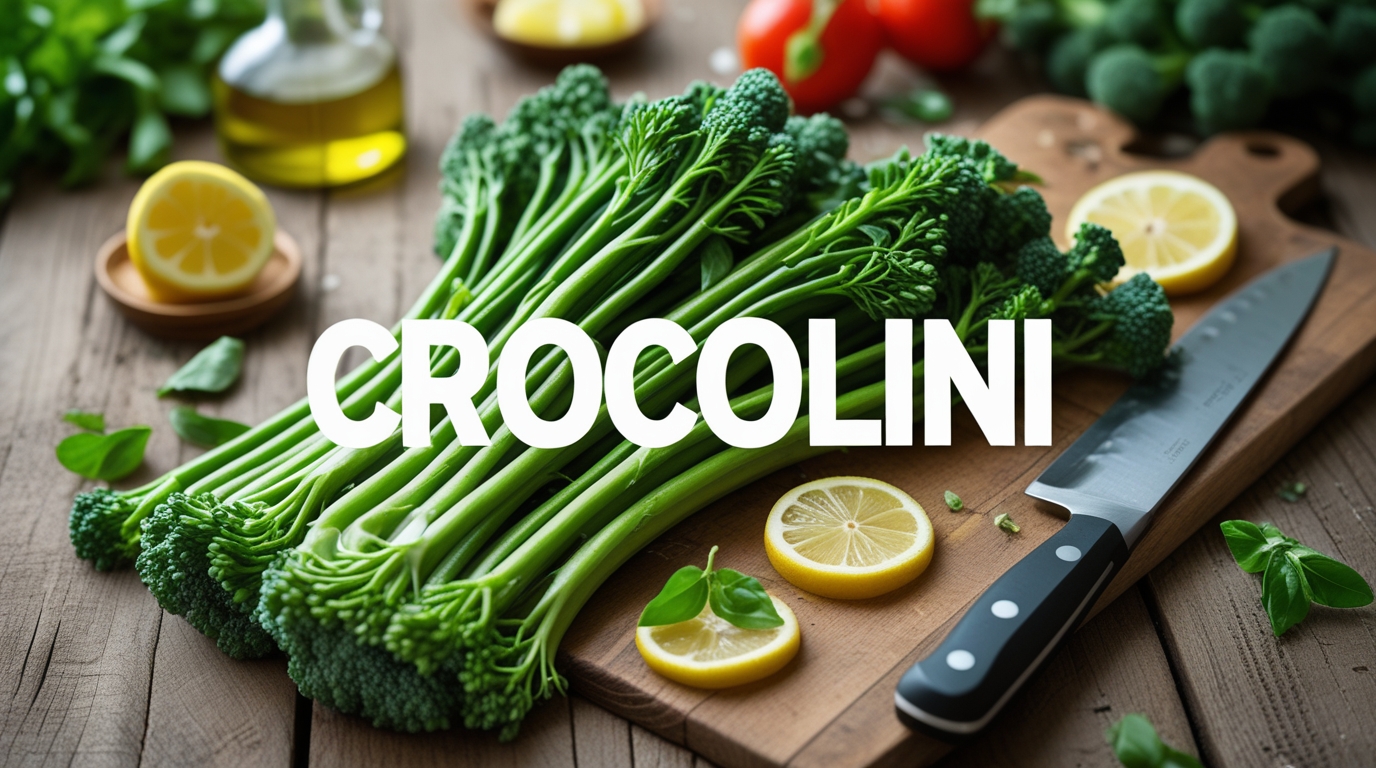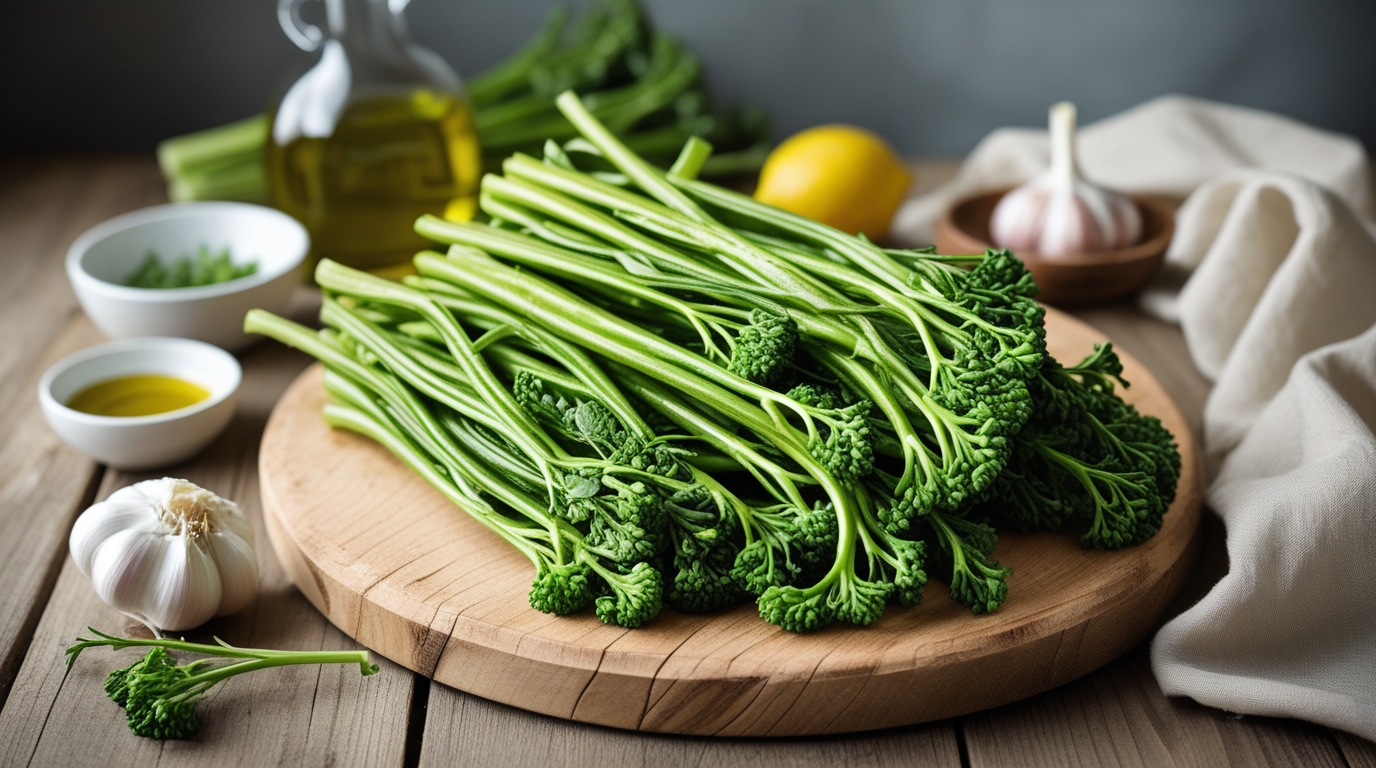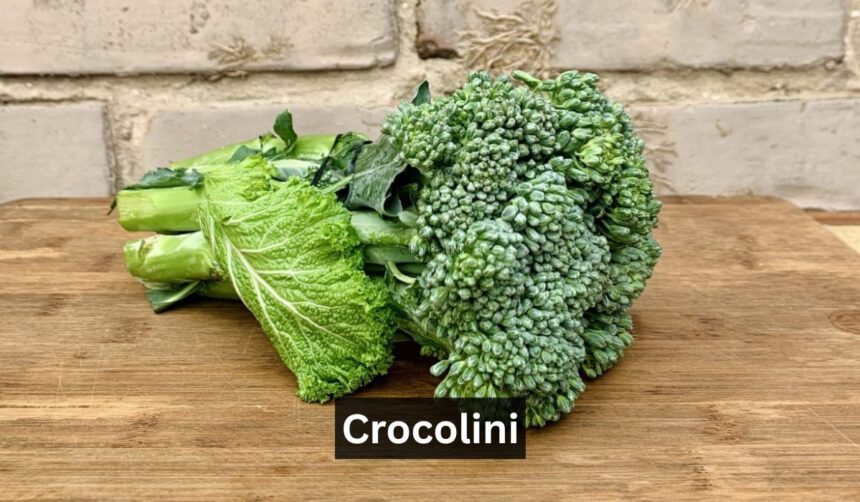If you’ve been browsing the produce aisle or scrolling through healthy recipe blogs lately, you’ve probably seen a new name popping up — Crocolini. Bright green, tender, and slightly sweet, this trendy vegetable has captured the attention of chefs, nutritionists, and health-conscious home cooks across the United States. More than just a new leafy green, Crocolini is being praised for its unique flavor, impressive nutrition profile, and versatility in everyday cooking.
But what exactly is Crocolini, and why is it suddenly being called the next super vegetable? In this in-depth guide, we’ll uncover what makes Crocolini special, explore its health benefits, learn how to cook it, and explain why it deserves a permanent spot in your kitchen.
What Is Crocolini? A Closer Look at the Green Gem
Crocolini is a tender-stemmed green vegetable closely related to broccoli and broccolini. It’s part of the Brassica family — the same plant group that includes kale, cabbage, and cauliflower. Crocolini combines the best of both worlds: the mild sweetness of broccoli and the elegant, slender stems of Chinese kale.
Originating from specialized plant breeding, Crocolini was developed to offer a softer texture and milder flavor, making it ideal for quick cooking methods. Its bright green florets and thin, edible stems make it both beautiful and practical in the kitchen. It’s not genetically modified; rather, it’s naturally crossbred for better flavor and texture — something modern consumers appreciate in fresh produce.
Why Crocolini Is the New Super Vegetable

The term super vegetable isn’t just marketing hype — Crocolini truly earns the title. It’s nutrient-dense, packed with vitamins, minerals, antioxidants, and fiber. Every bite delivers a powerful combination of nutrients that support immunity, digestion, and overall health.
A single serving of Crocolini provides a boost of vitamin C, vitamin K, iron, calcium, and dietary fiber — all essential for maintaining a healthy lifestyle. Its low-calorie, low-carb profile makes it perfect for balanced diets like keto, Mediterranean, and plant-based meal plans. Nutrition experts often highlight Crocolini as a “functional food,” meaning it doesn’t just fill you up — it actively supports your body’s wellness from the inside out.
Crocolini vs. Broccolini and Broccoli: What’s the Difference?
At first glance, Crocolini looks similar to broccolini, but they’re not exactly the same. While both are hybrids of the broccoli family, Crocolini has longer stems, smaller florets, and a more delicate texture. The flavor is subtly sweeter and less bitter than traditional broccoli, making it more appealing to children and adults who usually shy away from strong-tasting greens.
From a culinary standpoint, Crocolini’s tender stems require less cooking time and can be enjoyed whole — no trimming or peeling needed. Unlike broccoli, which can turn mushy if overcooked, Crocolini retains its crisp-tender bite, even when sautéed or roasted. Its versatility makes it a favorite among chefs in upscale restaurants and home kitchens alike.
The Nutritional Powerhouse: Health Benefits of Crocolini
Adding Crocolini to your meals does more than make your plate look vibrant — it provides a range of health benefits backed by nutritional science.
-
Boosts Immunity: Thanks to its high vitamin C content, Crocolini helps strengthen the immune system and promotes collagen production for healthy skin and tissue repair.
-
Supports Bone Health: With ample vitamin K and calcium, Crocolini plays a key role in maintaining strong bones and preventing age-related bone density loss.
-
Aids Digestion: Its natural fiber supports gut health, promotes regularity, and helps balance blood sugar levels.
-
Protects Against Inflammation: Antioxidants such as sulforaphane help fight oxidative stress and may reduce the risk of chronic diseases.
-
Heart-Healthy Choice: Studies show cruciferous vegetables like Crocolini can support cardiovascular health by improving cholesterol balance and reducing inflammation.
How to Cook Crocolini: Delicious and Simple Methods
One of the best things about Crocolini is how easy it is to cook. Whether you’re a beginner or a seasoned home chef, you’ll find endless ways to prepare this vegetable while preserving its nutrients and flavor.
-
Sautéed Crocolini: Heat olive oil and garlic in a skillet, add Crocolini, and cook for 4–5 minutes until tender. Finish with a squeeze of lemon.
-
Roasted Crocolini: Toss with olive oil, salt, and pepper; roast at 425°F for about 10 minutes until slightly crisp and golden.
-
Steamed Crocolini: Steam for 3–4 minutes for a nutrient-preserving option, then drizzle with a bit of butter or vinaigrette.
-
Grilled Crocolini: Lightly charred Crocolini makes an elegant side dish for meats or seafood. Brush with olive oil and grill for 3 minutes per side.
Whichever method you choose, Crocolini’s flavor shines through — mild, nutty, and naturally sweet.
Tasty Ways to Include Crocolini in Everyday Meals

Crocolini fits effortlessly into nearly any dish. In salads, it adds crunch and color; in stir-fries, it blends beautifully with sauces; and in pasta or grain bowls, it adds a satisfying bite.
Try tossing steamed Crocolini with garlic butter and parmesan for a quick side dish, or mix it into omelets for a nutrient-packed breakfast. It also pairs well with Asian-style glazes, citrus dressings, or creamy dips. Because of its subtle flavor, Crocolini complements both hearty and light meals — from grilled salmon to quinoa bowls.
Buying and Storing Crocolini
In the U.S., Crocolini is becoming widely available in grocery stores, farmer’s markets, and online produce shops. Look for bright green stalks with firm stems and tightly closed florets — a sign of freshness. Avoid yellowing or limp stems.
To store, wrap the bunch in a damp paper towel and keep it in a perforated bag inside the refrigerator. It typically stays fresh for up to five days. For longer storage, blanch the stems in boiling water for two minutes, then freeze them in airtight containers for later use.
Is Crocolini Sustainable? The Eco-Friendly Side of This Veggie
Sustainability is an important consideration for today’s shoppers, and Crocolini scores well in that department. Many farms in the U.S. grow Crocolini using eco-friendly agricultural practices, such as reduced pesticide use, efficient irrigation, and crop rotation to maintain soil health.
Because it’s a quick-growing plant, Crocolini requires fewer resources to produce compared to some larger crops. This makes it a great choice for consumers who want to eat sustainably without sacrificing flavor or nutrition.
Why Chefs Love Cooking with Crocolini
Restaurant chefs have embraced Crocolini for its elegant appearance, vibrant color, and versatility. Its long stems and bright green florets make any dish look gourmet. It holds up beautifully under high heat, meaning it can be grilled, roasted, or stir-fried without losing its structure.
Crocolini’s flavor profile — slightly sweet with a peppery hint — pairs well with garlic, lemon, soy sauce, sesame, or even creamy cheese sauces. From upscale steakhouses to vegan cafés, it’s quickly becoming a menu favorite across the country.
Crocolini in Nutrition Trends: Why It Fits Modern Lifestyles
As more Americans prioritize clean eating and plant-forward diets, Crocolini naturally fits into these evolving food trends. It’s gluten-free, vegan, keto-friendly, and low in calories — all while delivering high nutritional value.
Nutritionists love recommending Crocolini to clients who struggle to eat enough greens. It’s milder than kale, easier to cook than broccoli, and far more versatile than spinach. Whether you’re meal-prepping, following a fitness plan, or just trying to eat more vegetables, Crocolini makes it effortless.
Final Thoughts: Why Crocolini Deserves a Spot in Your Kitchen
Crocolini may be new to the produce scene, but it’s already proving that it’s more than just a passing trend. This vibrant green vegetable offers an unbeatable combination of flavor, nutrition, and convenience. From boosting your immune system to adding elegance to your dinner table, Crocolini truly lives up to the title of “super vegetable.”
If you haven’t tried it yet, now’s the perfect time to bring Crocolini into your kitchen. With its quick cooking time, fresh taste, and health benefits, it’s a small change that can make a big difference in your diet and lifestyle.
Frequently Asked Questions (FAQs)
1. What exactly is Crocolini?
Crocolini is a tender-stemmed green vegetable related to broccoli and kale. It’s naturally crossbred for a sweeter flavor, softer texture, and quicker cooking time — making it one of the most versatile greens available.
2. Is Crocolini genetically modified?
No, Crocolini is not genetically modified. It’s created through natural plant breeding, combining the best traits of different brassica vegetables for improved taste and texture.
3. How does Crocolini taste?
Crocolini has a mild, slightly sweet flavor with a hint of nuttiness. It’s less bitter than broccoli and softer than kale, making it enjoyable even for those who usually dislike green vegetables.
4. What’s the best way to cook Crocolini?
You can sauté, roast, steam, or grill Crocolini. Quick cooking methods help retain its bright color and nutrients. A drizzle of olive oil and a squeeze of lemon is often all it needs to taste amazing.
5. Where can I buy Crocolini in the U.S.?
Crocolini is available in many major grocery chains, local farmer’s markets, and online produce retailers. Look for firm stems and fresh, green florets when shopping for the best quality.
FOR MORE : FLIPPAMAGAZINE












